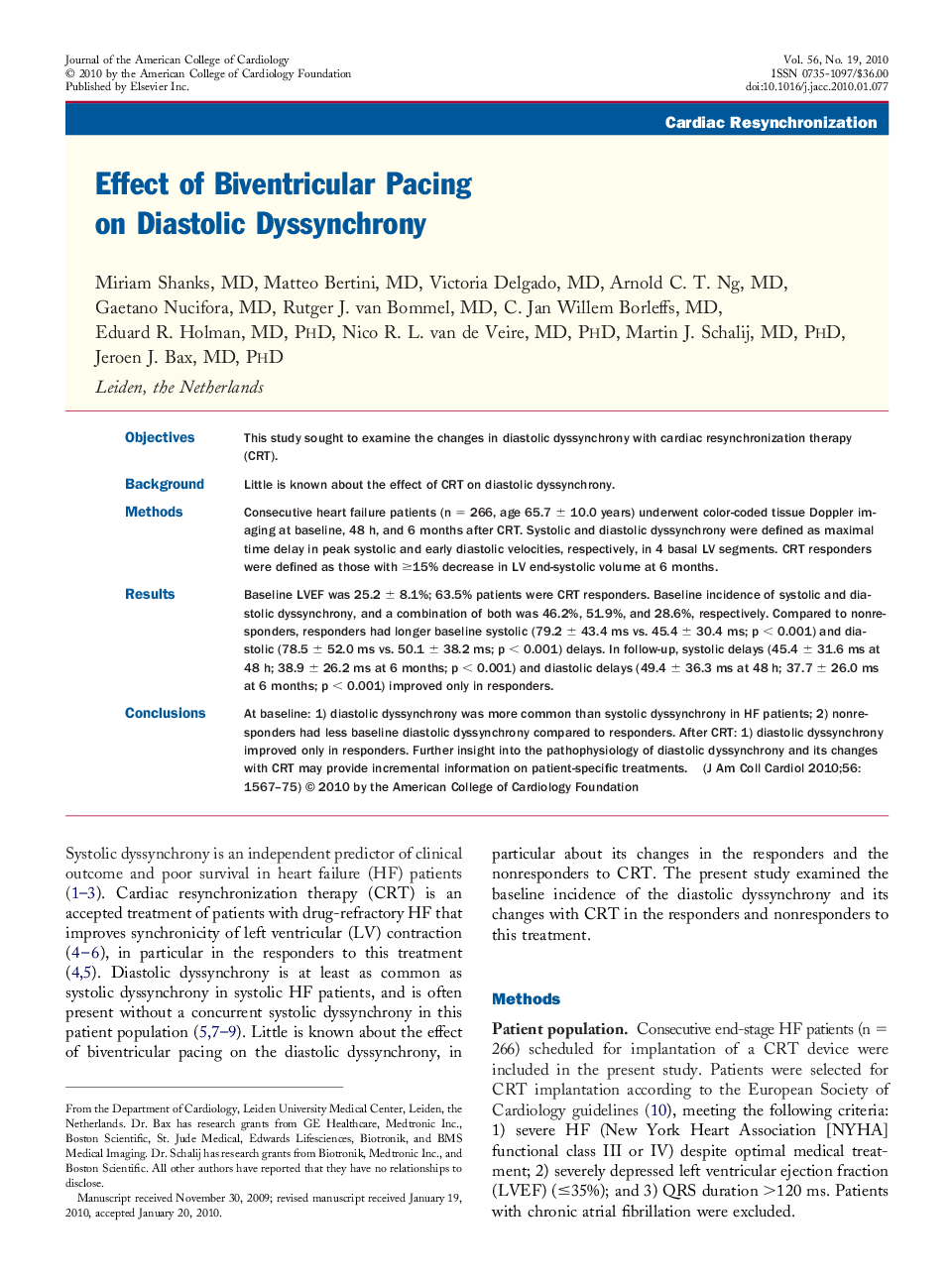| Article ID | Journal | Published Year | Pages | File Type |
|---|---|---|---|---|
| 2948313 | Journal of the American College of Cardiology | 2010 | 9 Pages |
ObjectivesThis study sought to examine the changes in diastolic dyssynchrony with cardiac resynchronization therapy (CRT).BackgroundLittle is known about the effect of CRT on diastolic dyssynchrony.MethodsConsecutive heart failure patients (n = 266, age 65.7 ± 10.0 years) underwent color-coded tissue Doppler imaging at baseline, 48 h, and 6 months after CRT. Systolic and diastolic dyssynchrony were defined as maximal time delay in peak systolic and early diastolic velocities, respectively, in 4 basal LV segments. CRT responders were defined as those with ≥15% decrease in LV end-systolic volume at 6 months.ResultsBaseline LVEF was 25.2 ± 8.1%; 63.5% patients were CRT responders. Baseline incidence of systolic and diastolic dyssynchrony, and a combination of both was 46.2%, 51.9%, and 28.6%, respectively. Compared to nonresponders, responders had longer baseline systolic (79.2 ± 43.4 ms vs. 45.4 ± 30.4 ms; p < 0.001) and diastolic (78.5 ± 52.0 ms vs. 50.1 ± 38.2 ms; p < 0.001) delays. In follow-up, systolic delays (45.4 ± 31.6 ms at 48 h; 38.9 ± 26.2 ms at 6 months; p < 0.001) and diastolic delays (49.4 ± 36.3 ms at 48 h; 37.7 ± 26.0 ms at 6 months; p < 0.001) improved only in responders.ConclusionsAt baseline: 1) diastolic dyssynchrony was more common than systolic dyssynchrony in HF patients; 2) nonresponders had less baseline diastolic dyssynchrony compared to responders. After CRT: 1) diastolic dyssynchrony improved only in responders. Further insight into the pathophysiology of diastolic dyssynchrony and its changes with CRT may provide incremental information on patient-specific treatments.
